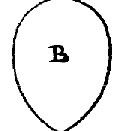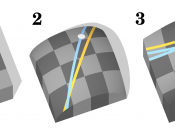Euclidean Geometry
Since the beginning of mankind there has always been mathematics and from that, geometry. Because of its practical uses in everyday life and in building and developing, many ancient civilizations like the Egyptians and Babylonians mastered the concepts of geometry and passed down as knowledge throughout generations. The first cultures to completely examine these ideas and concepts were the ancient Greeks. They took a rigorous and dedicated approach to connect the webs of complicated ideas they had inherited and to tie them together. Finally, they came up with the concept that for something to be true, you must be able to prove it from other things that are true. Over a length of time mathematicians came up with a group of proofs and ideas based on unproven assumptions which are known as "axioms." The most known and hardest working mathematicians were probably Thales, Pythagoras, and the infamous Euclid.
In 300 B.C. there was a mathematician from Alexandria called Euclid. He tied all of his most valuable information into a book called "The Elements". In "The Elements" Euclid stated that there were five basic axioms and from these there could form 465 different theorems. This book was a fundamental book in geometry for over two centuries. The basic geometry taught and known today is known as "Euclidean Geometry" after the revolutionary mathematician. This "Euclidean"
geometry went without question for a long time until many noticed a conflict with his fifth axiom, which was: For a given line and a point not on the line, there is exactly one line that can be drawn through the point that is parallel to it. After a while many noticed problems with this statement and other "non-Euclidean" geometries started to develop.
Spherical Geometry
These disagreements with Euclid and his fifth axiom spawned the...


